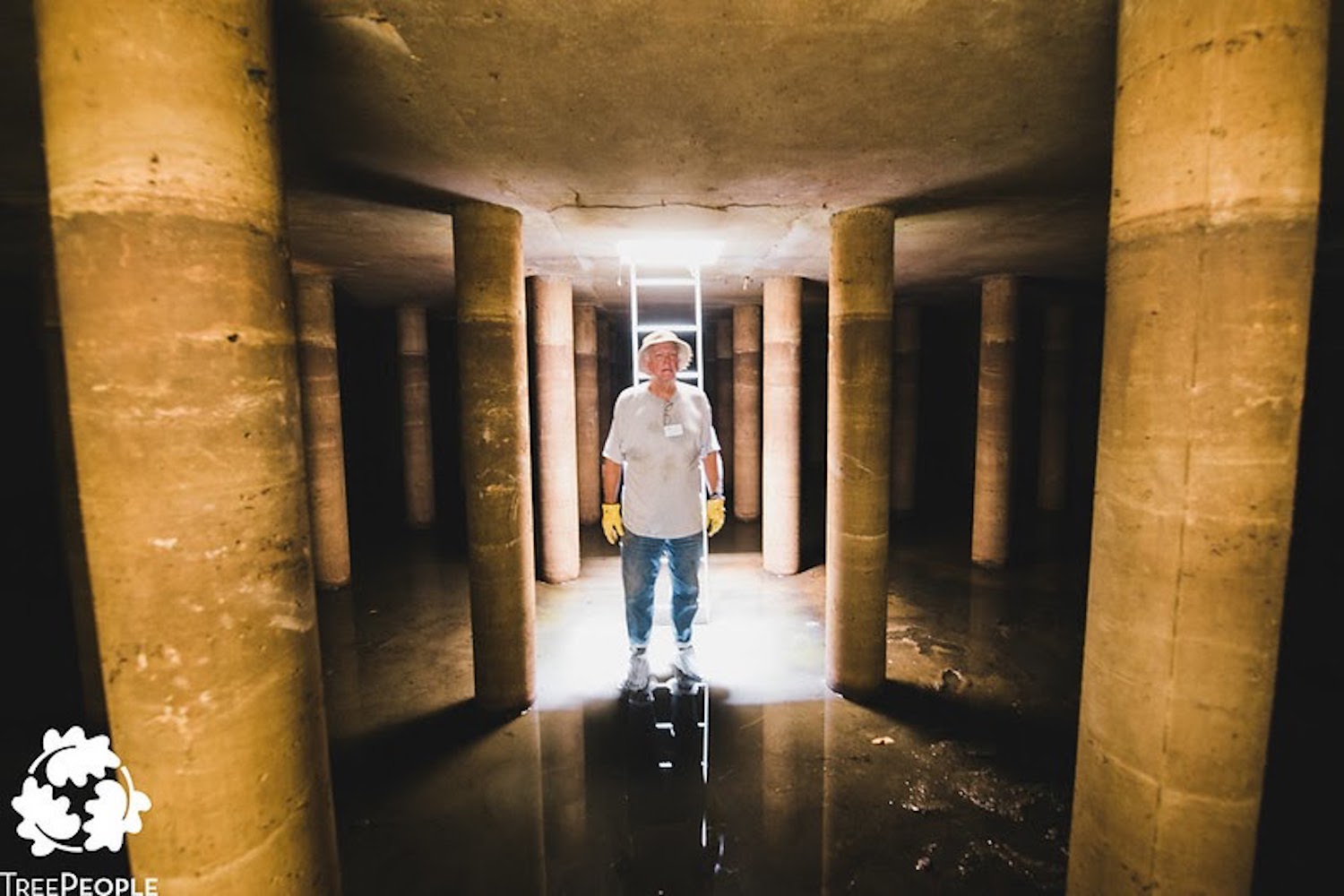Hey TreePeople!
It’s been a rainy few weeks in LA and it’s a great reminder of how important it is to capture this precious resource that falls from the sky each winter.
It’s something we’ve been advocating for since we started in 1973!
To do our part at our home in Coldwater Canyon Park, TreePeople has come up with a cool way to store this precious resource: a 216,000-gallon underground cistern.
As our summers continue to become longer, dryer and hotter and rainstorms have been getting less frequent, this makes becoming water-resilient in Los Angeles even more important. (editor’s note: check out https://safecleanwaterla.org/ to learn more about Measure W!)
TreePeople’s massive underground water reservoir is not unlike the ancient Roman catacombs in design and Jim is excited to share more about what it does and its importance to our local environment.
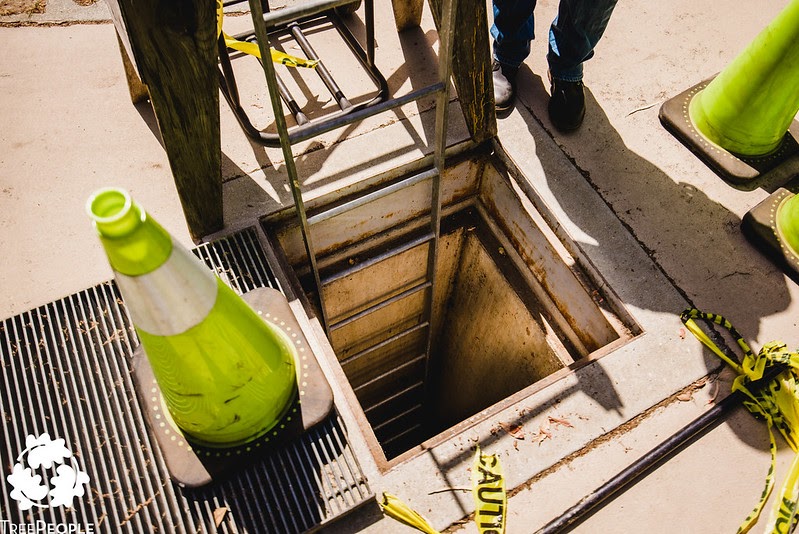
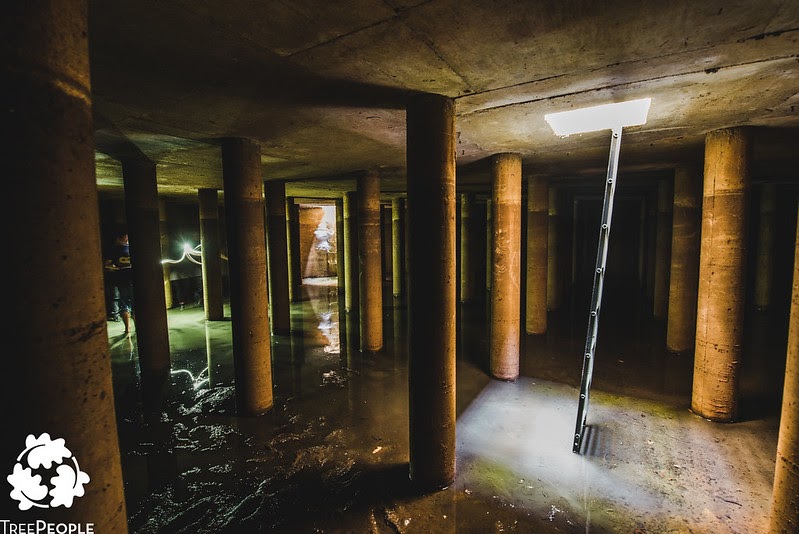
What’s the history behind the cistern?
Back in the late 90s, TreePeople focused on the question of water sustainability in Los Angeles. We decided to take it upon ourselves to be a demonstration site to display all the ways we can capture rain and make ourselves more water resilient.
When we were working to renovate our headquarters in 2003, we worked with the city to excavate the hole where the cistern would eventually be built. (editors note: if you hike at the park, you could walk right over the cistern!)
Over the years, we’ve had many cities visit us to see how we did it and how they could do the same to capture water in their cities.
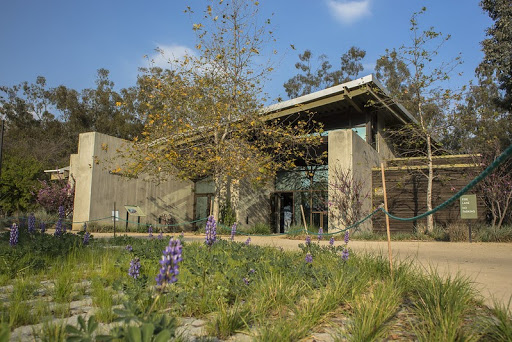
How does rainwater get collected and where? How do we use the water at the Park?
When it rains, the water gets collected from our conference center’s rooftop, the parking lot, and the fire lanes surrounding the hilltop, all of which drain straight to the cistern.
Once it’s time to use the water, we send it to driplines and bubblers that directly water our plants and trees once a week in the evening.
How many gallons of water can the cistern hold? If it overfills, where does it go?
The cistern has a capacity of 216,000 gallons, is 8 feet deep, and 70 feet in diameter.
When it rains a lot, which happened this past weekend, the extra water flows towards Coldwater Canyon Creek and eventually flows into the Upper Los Angeles River.
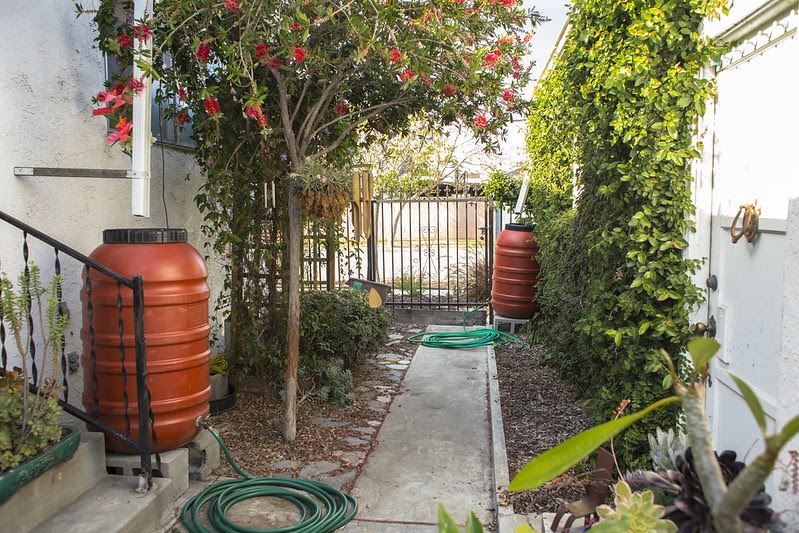
Some readers may be interested in collecting rainwater for their homes and gardens. Do you have any tips or resources to share?
I’d recommend using a diverter attached to your downspout to direct rainwater away from the driveway and into your yard or garden.
Rainbarrels are a great way to store water and use instead of traditional faucets; you could even use a diverter to connect your downspout directly to it!
You can also check out our website for more tips and resources on how to save rainwater for your home!
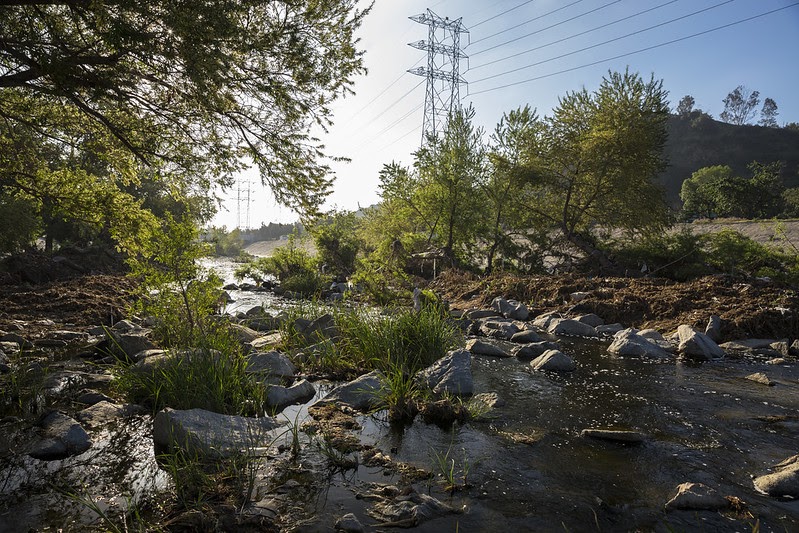
How can our readers help to conserve water in their communities?
It’s important to know that much of LA’s water is actually imported even though we have tons of groundwater underneath our feet! Little things like watering our plants in the morning or evening and turning off faucets when we’re done help save water for our communities.
When you’re gardening, using mulch is a great way to save water since it retains moisture weeks after it rains and slowly shares it with the soil underneath on hot days.

